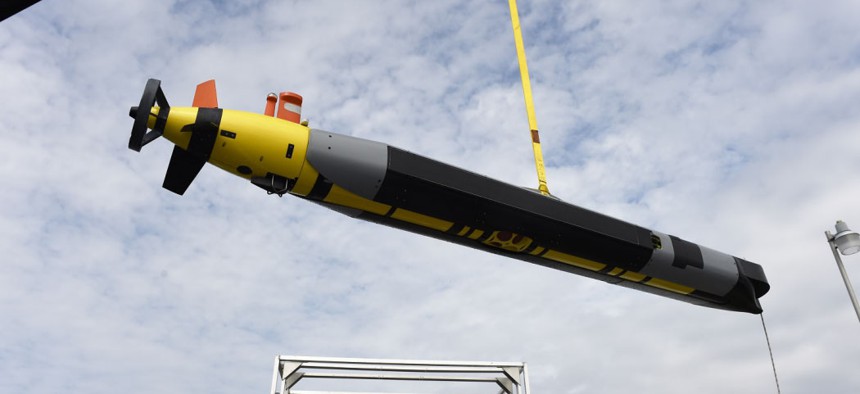DARPA dives in to underwater navigation project
BAE was recently awarded a contract to work on DARPA’s Positioning System for Deep Ocean Navigation, an attempt to create a GPS-like system under the sea.
Defense officials have been addressing the proliferation of threats in the undersea domain, with Defense Secretary Ashton Carter directing $600 million over the next five years toward unmanned undersea technology development. Part of this effort is aimed at building a reliable undersea navigation system, similar to above-ground GPS, that can resist potential jamming attempts by adversaries.
The Defense Advanced Research Projects Agency’s Positioning System for Deep Ocean Navigation, or POSYDON, is one such project that seeks to allow undersea vehicles to accurately navigate beneath the ocean’s surface. BAE has been selected by DARPA to work on the first phase of the two-phase POSYDON project to “step through or to start showing the capability in a phased approach so that there’s a way for them [DARPA] to measure a certain amount of success so that they can then make decisions on whether or not they’re going to continue with [it],” Geoffrey Edelson, director of Maritime Systems and Technology at BAE, said in an interview.
BAE’s efforts currently are more in the prototyping and demonstrator realm. Edelson said BAE is essentially trying to prove out different pieces of the technology. The platform will try to process signals and project its location with the eventual goal of building an infrastructure as well as the software and sensor onboard a UUV that is not only affordable, but does not overexert the submersible.
“POSYDON aims to replace current navigational methods that pose a detection risk for undersea vehicles forced to surface periodically to access the space-based Global Positioning System (GPS), which cannot sufficiently penetrate seawater. In addition, access to above-water GPS may be denied by hostile signal jamming,” a release from BAE stated. “Under DARPA’s POSYDON program, a BAE Systems-led team will create a positioning, navigation, and timing system designed to permit vehicles to remain underwater by using multiple, integrated, long-range acoustic sources at fixed locations around the oceans.”
“Without speaking for DARPA, I believe that their perspective is that there’s going to be a proliferation of unmanned undersea vehicles that are going to be used eventually for military purposes, whatever those missions are, and when they’re doing those missions, they don’t want to come to the surface to, number one, take them out of their mission and, number two, potentially get detected,” Edelson said of the potential intent of the project. The goals of the POSYDON project, Edelson added, are to create an ability to operate in an environment in which navigation signals could be jammed.
Edelson noted that Phase I will take place during a 12-month period.




